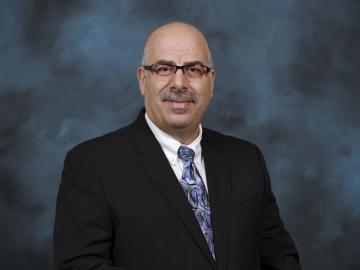Filter News
Area of Research
- Advanced Manufacturing (6)
- Biology and Environment (14)
- Building Technologies (1)
- Clean Energy (48)
- Computational Engineering (2)
- Computer Science (4)
- Electricity and Smart Grid (1)
- Fusion and Fission (7)
- Isotopes (5)
- Materials (11)
- Materials for Computing (14)
- Mathematics (1)
- National Security (4)
- Neutron Science (10)
- Quantum information Science (1)
- Sensors and Controls (1)
- Supercomputing (9)
- Transportation Systems (1)
News Type
Date
News Topics
- 3-D Printing/Advanced Manufacturing (19)
- Advanced Reactors (1)
- Artificial Intelligence (3)
- Big Data (3)
- Bioenergy (4)
- Biology (9)
- Biomedical (4)
- Biotechnology (2)
- Buildings (8)
- Chemical Sciences (5)
- Clean Water (5)
- Climate Change (8)
- Composites (6)
- Computer Science (16)
- Coronavirus (7)
- Critical Materials (4)
- Cybersecurity (4)
- Decarbonization (2)
- Energy Storage (14)
- Environment (16)
- Frontier (3)
- Fusion (7)
- Grid (8)
- High-Performance Computing (10)
- Isotopes (6)
- ITER (3)
- Machine Learning (1)
- Materials (27)
- Materials Science (15)
- Mathematics (1)
- Microscopy (7)
- Nanotechnology (7)
- National Security (3)
- Net Zero (1)
- Neutron Science (10)
- Nuclear Energy (2)
- Physics (1)
- Polymers (4)
- Quantum Computing (4)
- Quantum Science (8)
- Security (1)
- Space Exploration (3)
- Statistics (1)
- Summit (5)
- Sustainable Energy (26)
- Transportation (12)
Media Contacts

Moe Khaleel has been selected to lead the National Sciences Security Directorate, or NSSD, at the Department of Energy’s Oak Ridge National Laboratory.

Susan Hubbard, an acclaimed scientific leader and researcher, has been named Deputy for Science and Technology at the Department of Energy’s Oak Ridge National Laboratory. Her appointment is effective March 1, 2022.

A world-leading researcher in solid electrolytes and sophisticated electron microscopy methods received Oak Ridge National Laboratory’s top science honor today for her work in developing new materials for batteries. The announcement was made during a livestreamed Director’s Awards event hosted by ORNL Director Thomas Zacharia.

Detecting the activity of CRISPR gene editing tools in organisms with the naked eye and an ultraviolet flashlight is now possible using technology developed at ORNL.

ORNL and Tuskegee University have formed a partnership to develop new biodegradable materials for use in buildings, transportation and biomedical applications.

An analysis by Oak Ridge National Laboratory shows that using less-profitable farmland to grow bioenergy crops such as switchgrass could fuel not only clean energy, but also gains in biodiversity.

A discovery by Oak Ridge National Laboratory researchers may aid the design of materials that better manage heat.

Oak Ridge National Laboratory researchers determined that designing polymers specifically with upcycling in mind could reduce future plastic waste considerably and facilitate a circular economy where the material is used repeatedly.

A study by Department of Energy researchers detailed a potential method to detect the novel coronavirus

A new technology for rare-earth elements chemical separation has been licensed to Marshallton Research Laboratories, a North Carolina-based manufacturer of organic chemicals for a range of industries.




